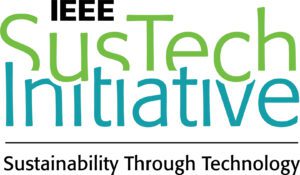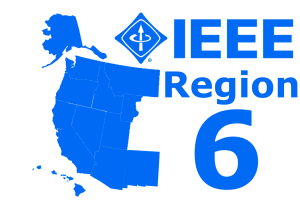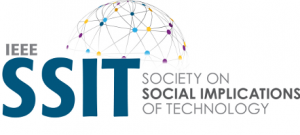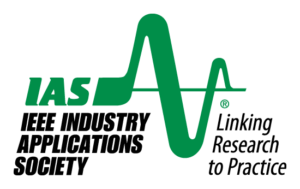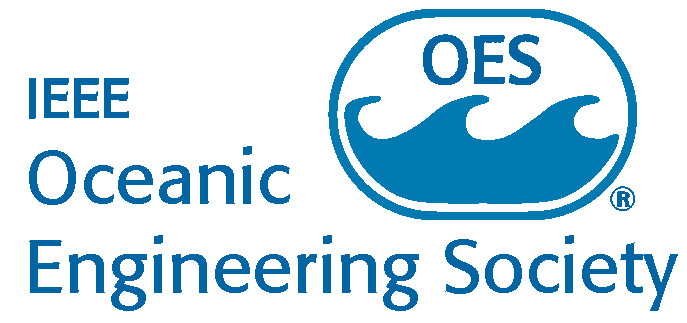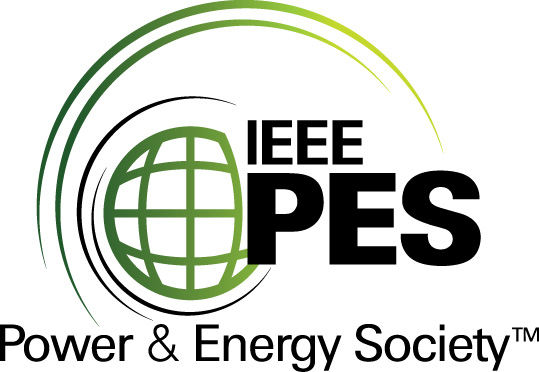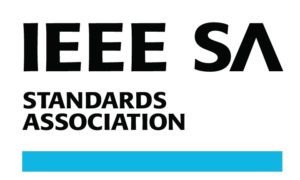Keynotes 2022
Keynote Talks
SusTech 2022
Adam Drobot, Chairman, OpenTechWorks Inc.
David Fork and Ross Koningstein, Google
Ref: https://spectrum.ieee.org/engineers-you-can-disrupt-climate-change
Jen M. Huffstetler, Intel
Jayant Sinha, Utilities India Industry Platform, Capgemini
Paul Werbos, National Science Foundation (retired), USA
Steven Mirsky, NuScale Power
Sustainable Aviation Forum
Dr. Stefan Breunig – Head of Strategy, Rolls-Royce Electrical
Jean Louis Debauche – Founder and CEO of JLD Consultant, Co-Founder of ZE-Glue Limited
Dr. Hao Huang, Retired Technology Chief – GE Aviation Electrical Power
Zia Abdullah, National Renewable Energy Laboratory
Brian Barker, President and CEO, Hummingbird Aero, LLC
John C. Havens, Sustainability Practice Lead, IEEE Standards Association
Sustainability and The Internet of Things: Translating Technology into Action
Adam Drobot, Chairman, OpenTechWorks Inc.
Abstract:
Much of the popular discourse about sustainable development centers on the framework defined by the Brundtland Report [1]. The report addresses the future of human existence on the planet and the impacts on society, the environment, culture, and economics [2]. The hoped for results are described by the Sustainability Development Goals [3] that relate a more granular view to desirable, but still vague, traits, behavior, and outcomes. The underlying issues are inherently complex and tangled. The Internet of Things (IoT) and accompanying infrastructure and technologies provide tools for improving our understanding of the state of the planet, the consequences of decisions, resource allocations, and the dynamics that drive outcomes across the SDGs. What I will cover in the talk is Sustainability, the Internet of Things, how the two are related, and in depth examples that relate how technology can translate into positive outcomes and results. The examples address three important problems and include the application of IoT to Agriculture, Smart Cities, and Cultural Dynamics.
-
-
- The Brundtland Commission: https://sustainabledevelopment.un.org/content/documents/5987our-common-future.pdf
- The four pillars of sustainability: https://en.unesco.org/themes/education-sustainable-development/what-is-esd/sd
- The seventeen Sustainability Development Goals (SDGs): https://sdgs.un.org/goals
-
Biography:
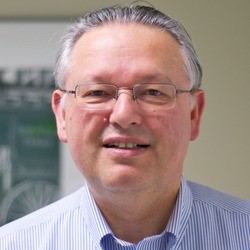 Adam Drobot is the Chairman of the Board of OpenTechWorks, Inc. He serves on the Boards of multiple early-stage companies. His activities are strategic consulting, start-ups, non-profits, and industry associations. In the past he was the President of Applied Research at Telcordia Technologies (Bellcore) and the company’s CTO, and before that the Senior Vice President for Science and Technology at SAIC/LEIDOS.
Adam Drobot is the Chairman of the Board of OpenTechWorks, Inc. He serves on the Boards of multiple early-stage companies. His activities are strategic consulting, start-ups, non-profits, and industry associations. In the past he was the President of Applied Research at Telcordia Technologies (Bellcore) and the company’s CTO, and before that the Senior Vice President for Science and Technology at SAIC/LEIDOS.
Adam is a current member of the FCC Technological Advisory Council where he Co-Chairs the Working Group on Artificial Intelligence; the University of Texas Physics Department Advisory Council; and Chairman of FAMES USA a non-profit that organizes programs to attract disadvantaged youths to careers in STEM fields. In the past, he was on the Boards of the Telecommunications Industry Association (TIA) where he Chaired the Technology Committee; the Association for Telecommunications Industry Solutions (ATIS); the New Jersey Technology Council; the US DoT ITS Program Advisory Committee, and the University of Michigan Transportation Research Institute External Advisory Board.
Over the years he has been active in IEEE and served as the Chair of, multiple Committees including the IEEE IoT Activities Board, and multiple major conferences such as the IEEE World Forum on IoT. He is currently a member of the IEEE Press Editorial Board. He has published over 150 journal articles and holds 27 patents. He is a fellow of the American Physical Society. His degrees include a BA in Engineering Physics from Cornell University and a PhD. in Plasma Physics from the University of Texas.
How engineers will save the world
David Fork and Ross Koningstein, Google
Abstract:
The International Panel on Climate Change reported that to remain within a 1.5 °C warming limit, net greenhouse gas emissions need to be reduced to zero by 2050. Doing so by 2050 with carbon-free energy, energy use changes and carbon sequestration presents a host of challenges.
In our 2021 article in IEEE Spectrum we outlined many of the engineering tasks that can keep us busy in the coming decades. The rate and extent to which global net emissions decline depends both on which solutions get developed and deployed and also on filling significant research gaps in order to realize a full climate solution.
In this talk we will share insights about where we are with respect to some of these challenges and identify where innovations are needed in science, engineering and policy.
Bios:
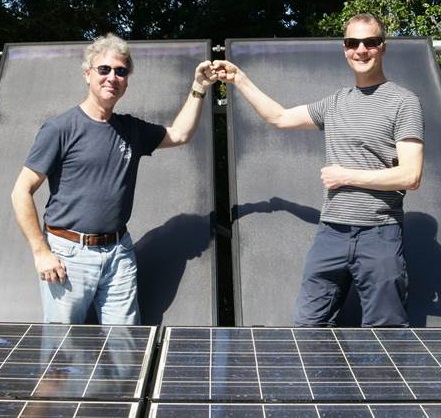 David Fork is a Renewable Energy Technologist at Google where he did solar receiver assessment on the Renewable Energy Cheaper than Coal (RE<C) project and intelligent inverter control on the Bottom up Grid (BUG) projects. He also designed the Google Bike. He currently serves within Google’s Climate and Energy Team. Before Google he was a Principal Scientist at the Palo Alto Research Center (PARC) where he was instrumental in several start up ventures, including two in solar energy. He graduated Summa Cum Laude from the University of Rochester in 1987 with degrees in Physics and Electrical Engineering. He completed his Ph.D. from Stanford University in Applied Physics in 1991.
David Fork is a Renewable Energy Technologist at Google where he did solar receiver assessment on the Renewable Energy Cheaper than Coal (RE<C) project and intelligent inverter control on the Bottom up Grid (BUG) projects. He also designed the Google Bike. He currently serves within Google’s Climate and Energy Team. Before Google he was a Principal Scientist at the Palo Alto Research Center (PARC) where he was instrumental in several start up ventures, including two in solar energy. He graduated Summa Cum Laude from the University of Rochester in 1987 with degrees in Physics and Electrical Engineering. He completed his Ph.D. from Stanford University in Applied Physics in 1991.
He has studied and worked primarily on thin film electronic materials and devices. His research activities include complex oxide epitaxial thin films, laser crystallized display materials, organic electroluminescent devices, semiconductor LEDs and lasers, electronic imaging systems, micro-electromechanical systems and photovoltaic devices. Dr. Fork holds over 80 issued US patents and has authored over 100 publications.
Ross Koningstein was Google’s first director of engineering, and has worked on Google’s first energy efficient data centers, renewable energy, advanced nuclear energy and also carbon aware computing.
Engineering in a Responsible World
Jen M. Huffstetler, VP and GM, Data Center Platform Strategy, Mobilization, Sustainability and Services, Intel
Abstract:
What is sustainability worth to the next generations? What expectations do we set for ourselves to ensure a more sustainable tomorrow? Intel has established a long-standing commitment to environmental leadership to achieve efficiency, reduce costs, and respond to the needs of our customers and community stakeholders. In this talk, we’ll challenge engineers to rethink and reimagine technologies and businesses with sustainability in mind. This will require disruptive solutions that are outside the norm and non-traditional, such as data centers that reuse heat and platforms that are carbon aware. We are solving big problems to help protect our planet and improve the lives of every person. Join us on the journey.
Bio:
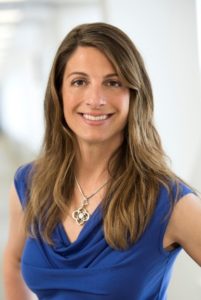 Jen M. Huffstetler is a Vice President and General Manager of Data Center Platform Strategy, Mobilization, Sustainability and Services at Intel. In this role she is responsible for driving the Xeon PnL strategy building, integration & execution across corporate-wide across Intel’s Data Platform technologies & business strategies to drive future growth, incubating Data Center services, and driving corporate level strategy and action for Sustainability.
Jen M. Huffstetler is a Vice President and General Manager of Data Center Platform Strategy, Mobilization, Sustainability and Services at Intel. In this role she is responsible for driving the Xeon PnL strategy building, integration & execution across corporate-wide across Intel’s Data Platform technologies & business strategies to drive future growth, incubating Data Center services, and driving corporate level strategy and action for Sustainability.
Previously, she led Data Center product management and storage; where she was responsible for the delivery to market of all data center processor products, GPUs and Intel DIMMs, driving overall data center revenue, as well as storage processor segment PnL.
Huffstetler joined Intel in 1996 as a fab process engineer and has spent the majority of her career applying her extensive technical and marketing experience to lead product management and product marketing efforts for a number of core Intel businesses, spanning the mobile (including Intel® Centrino Mobile Technology), desktop and Intel Server boards and systems.
Huffstetler holds a Bachelor’s degree in chemical engineering from MIT, and an MBA from Babson College, F.W. Olin Graduate School in Corporate Entrepreneurship. She is also a certified Executive Leadership Coach from Hudson Institute, Korn-Ferry Interpreter, and Birkman Certified.
Leveraging data to drive Sustainability in the Energy sector
Jayant Sinha, Senior Principal Consultant, Utilities India Industry Platform, Capgemini
Abstract:
As the countries around the globe race to meet their net zero deadlines, data plays an important role in analyzing climate change impacts in the energy sector. Also, technology plays a crucial role in mapping the humongous data residing in various forms, at diverse locations, to corresponding energy and carbon performance. In this keynote, I will talk on the role of digital technologies such as machine learning (ML), robotic process automation (RPA) and intelligent instrumentation, in real-time assessment, data visualization, smart analytics and generating insights for predicting potential carbon footprint of various energy practices. These data insights help the energy and utility sector to take decisive actions proactively to mitigate climate change repercussions, reduce emissions and promote sustainability.
Bio:
 Jayant Sinha is an Energy & Utilities SME, working on energy consultancy, technology services and digital transformation projects. Currently working in Capgemini, Bangalore, Jayant has over three decades of experience in Power, Water and Gas process automation, business transformation and digital innovation, with focus on energy efficiency, net zero initiatives and emission reduction. He is part of a global delivery team for utility projects on Smart Grids, Energy data management, Renewable Energy integration, Demand response management and Sustainability, in large transformational projects across multiple geographies.
Jayant Sinha is an Energy & Utilities SME, working on energy consultancy, technology services and digital transformation projects. Currently working in Capgemini, Bangalore, Jayant has over three decades of experience in Power, Water and Gas process automation, business transformation and digital innovation, with focus on energy efficiency, net zero initiatives and emission reduction. He is part of a global delivery team for utility projects on Smart Grids, Energy data management, Renewable Energy integration, Demand response management and Sustainability, in large transformational projects across multiple geographies.
Jayant has delivered multiple projects globally on innovative practices in Energy transition and supported his team in developing utility solutions around Sustainability, Circular Economy and Low Carbon technologies. He has delivered training to global customers as part of project delivery in Smart metering, Smart grid, Smart asset analytics, Renewable Energy and Carbon reduction solutions. He has thorough understanding of Electricity & Water regulations, markets, governing standards and best practices, and has over 30 published papers in the Energy domain to his credit.
Javant also writes for a Blog on Energy & Utilities transformation: https://jayantsinha.wordpress.com. You may connect with him on https://www.linkedin.com/in/jayantsinha1.
Climate Risks and IEEE Solutions: Much stronger than they told you
Paul Werbos, National Science Foundation (retired), USA
Abstract:
From my years running Adaptive and Intelligent Systems and Electric Power Research at NSF (until 2015) , I learned that new technologies — some well proven and grounded in work centered in the IEEE Power and Energy Society — would allow us to stop climate destruction much sooner and faster, and at lower cost, than any of the schemes we have heard from policy gatherings like COP26 or legislation anywhere on earth, including even the 2009 Obama climate bill which I evaluated for an office of the US Senate in 2009. Based on my talks and papers on the risks and solutions (http://www.werbos.com/climate_extinction_risk_and_solutions.htm), the IEEE/Wiley Series Editor for Power and Energy asked me to organize an edited book, by creating new connections and dialogue between all the players who are truly at the scientific and technical front lines of the risk and of the new solutions. This was an incredible learning experience, bringing out risks, near-term opportunities and optimal tradeoffs no one on earth knew about before these discussions and new networks. This talk will give an overview of the most important highlights, and opportunities for action.
From the Preface:
When Kumar asked us to organize a new book, to connect the real science, climatology, engineering and economics to address the worst risks coming to us from climate change, even we did not realize how much we had to learn by putting the pieces together, even in the study of climate risks themselves. We did not realize just how serious and near-term the biggest threats actually are. We did not yet know how many critical pieces need to be connected together in ways they have never been connected before, both to understand and reduce the threats.
In August, 2021, Metta Spencer (https://en.wikipedia.org/wiki/Metta_Spencer), a leader of Canadian futurist groups, asked what we really know from the very most solid science about the risk that climate change might actually become serious enough to endanger the existence of the human species. The key challenge was to bring together people who had never put the relevant pieces together to assess how bad the risk might be. This discussion, at https://www.youtube.com/watch?v=SMp9a0PwL3o, was a great eye-opener to us. But it was only just an opening.
We now know that the most important mass extinctions of life on earth in past history were caused by outgassing of H2S (a poison twice as potent per ppm as hydrogen cyanide) from the oceans. The H2S was mainly produced by a type of microbe which has different names in different scientific communities, but resulted from two conditions in deep ocean waters: (1) low oxygen; and (2) a high concentration of certain nitrates, such as phosphates, which need to be studied in greater depth.
We are now much more worried than we were at the start of this project, in part because of what Ward and Werbos learned from Wadhams about changes in ocean currents (in the youtube video!), but in part because of new information about mass extinctions in the past and data on nutrient flows in the ocean today.
Bio:
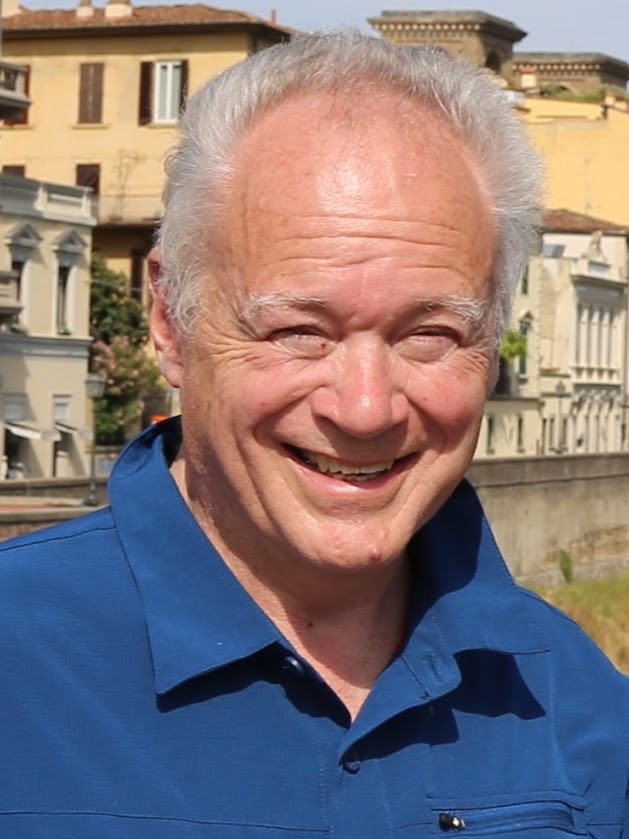 Paul Werbos began training as a mathematician, taking many university courses culminating in the graduate course in logic from Alonzo Church at Princeton while in middle and high school. Realizing the limits of deductive logic, he began his quest to understand inductive logic and intelligence in the mind back in those days, inspired by the work of John Von Neumann, Donald Hebb and early AI (Feigenbaum and Feldman). He obtained two degrees in economics from Harvard and the London School of Economics, divided equally between using mathematical economics as a model for distributed intelligence and developing some broader understanding. For his Harvard M.S., he took courses in quantum field theory (QFT) from Julian Schwinger, but did not fully understand the subject until many years later, after he started an activity in quantum technology and modeling at the National Science Foundation (see his papers at arxiv.org.)
Paul Werbos began training as a mathematician, taking many university courses culminating in the graduate course in logic from Alonzo Church at Princeton while in middle and high school. Realizing the limits of deductive logic, he began his quest to understand inductive logic and intelligence in the mind back in those days, inspired by the work of John Von Neumann, Donald Hebb and early AI (Feigenbaum and Feldman). He obtained two degrees in economics from Harvard and the London School of Economics, divided equally between using mathematical economics as a model for distributed intelligence and developing some broader understanding. For his Harvard M.S., he took courses in quantum field theory (QFT) from Julian Schwinger, but did not fully understand the subject until many years later, after he started an activity in quantum technology and modeling at the National Science Foundation (see his papers at arxiv.org.)
For his 1974 Harvard PhD thesis (reprinted in The Roots of Backpropagation, Wiley 1994), he proposed the development of more powerful, more biologically plausible reinforcement learning systems by the then new idea of using neural networks to approximate dynamic programming (ADP), including the value function. In order to implement ADP in a local biologically plausible manner, he translated Freud’s theory of “psychic energy” into an algorithm later called backpropagation, and a rigorous general theorem, the chain law for ordered derivatives, which later also became known as the reverse method or adjoint method for automatic or circuit-level differentiation. He has spent many years advancing the fields of ADP and backpropagation and brain-like prediction, aimed at developing and demonstrating the kind of designs which could actually explain the kind of general intelligence we see in the brain and in subjective human experience – collaborating at times with Karl Pribram and Walter Freeman and Pellionisz among others, and proposing biological experiments to test the theory.
In looking for applications which are really important to areas like energy, sustainability and space, he has also gotten deep into domain issues and organization, as reflected at www.werbos.com, serving on boards of the National Space Society, the Millennium Project, the Lifeboat Foundation, and the IEEE Energy Policy Committee, and as a Fellow in the Senate in 2009. From 1980-1989, he developed official econometric forecasting models (two based on backpropagation) and was lead analyst for the long-term future at EIA in the Department of Energy. He also has been selected for the 2022 Frank Rosenblatt award, the lead technical award for the IEEE Computational Society, to be awarded at WCCI2022 in Padua.
Nuclear Power for a Sustainable Future
Steven Mirsky, NuScale Power
Abstract:
This presentation addresses the global reality of what our world’s population is lacking to provide a reasonable standard of living. A brief history of NuScale Power and our unique NRC-licensed small modular reactor design is discussed along with our microreactor. This is followed by information on how nuclear power can be used for a wide spectrum of industrial activities to replace fossil fuels, work with renewable power, and provide critical energy infrastructure. The benefits of nuclear power for reliable base loaded electricity, hydrogen production, clean water are highlighted. In addition the safety and low environmental impact of nuclear power in comparison to fossil and renewable power is also addressed in this presentation.
Bio:
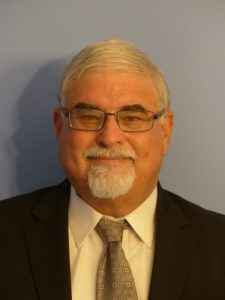 Steven Mirsky has been with NuScale Power for over 11 years. He is currently a Senior Technical Advisor in the NuScale Office of Technology working on micro-reactor designs and innovative applications for the SMR. Previously, he was the NuScale Licensing Manager in which he was responsible for directing U.S. Nuclear Regulatory Commission (NRC) review responses and interactions for some of the chapters and parts of the NuScale Design Certification Application (DCA), Nuclear Energy Institute (NEI) interface, and oversight of all NuScale Rockville office activities.
Steven Mirsky has been with NuScale Power for over 11 years. He is currently a Senior Technical Advisor in the NuScale Office of Technology working on micro-reactor designs and innovative applications for the SMR. Previously, he was the NuScale Licensing Manager in which he was responsible for directing U.S. Nuclear Regulatory Commission (NRC) review responses and interactions for some of the chapters and parts of the NuScale Design Certification Application (DCA), Nuclear Energy Institute (NEI) interface, and oversight of all NuScale Rockville office activities.
Mr. Mirsky has more than 44 years of experience in the nuclear industry. He has worked for Science Applications International Corporation (SAIC) and NUS Corporation consulting for U.S. and foreign nuclear power plants, DOE, and the NRC and at the Baltimore Gas and Electric Company (now Exelon) and Virginia Power and Electric Company (now Dominion Power) supporting the safety analysis, design, operation, licensing, and analysis of the Surry, North Anna, and Calvert Cliffs nuclear power plants. He holds an M.S. in Nuclear Engineering from Pennsylvania State University, a Bachelor of Engineering in Mechanical Engineering from Cooper Union, and is a licensed Professional Engineer in Mechanical Engineer in the State of Maryland.




